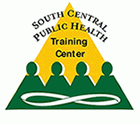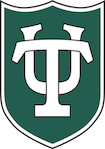
Community Needs Assessment
Course Description:
Assessing community needs is part of the ongoing process of program planning in many types of health, education and social service agencies. For several decades, public health professionals have conducted needs assessments to facilitate the design, implementation and evaluation of a variety of disease prevention and health promotion programs. This course provides students with the opportunity to focus their thinking on why and how to conduct needs assessments. Basic concepts and practice methods are reviewed. The course is based on selected professional publications and the experiences of the instructor.
Target Audience
Academic Faculty/Staff, Federal Government Employees, State Government Employees, Local Government Employees, Non-Government Employees and Students
Learning Objectives
- Define community needs assessment
- Discuss the rationale for conducting a needs assessment
- Outline the steps in assessing community needs
- Discuss basic needs assessment data considerations
- Discuss how needs assessment findings impact priority setting and decision making
- Explain leadership issues associated with needs assessment activities
- Describe activities relating to four information collection approaches
Instructor:

Tom Struzick, MSW/ACSW, LCSW, MEd
School of Public Health
University of Alabama at Birmingham
Available Credit
- 4.00 Participation/CETulane Professional and Continuing Education (PaCE) awards 4.00 hour(s) of credit for completing Community Needs Assessment
Price
Required Hardware/software
System Settings
This course is designed to work most effectively if your computer and internet connection meet certain minimal requirements. This course can be accessed using a Windows 10 PC or a Mac with High Sierra1, Mojave, or Catalina. Pop-up blockers should be disabled when viewing the course. Internet Explorer 11 (for Windows 10), or the current version of Google Chrome, Mozilla Firefox, or Apple Safari (for Windows 10 and or Mac) is required. Many of our courses require Java and JavaScript enabled.
Links to External Websites
Links to websites outside this course will open in a new window or tab. Some browsers may minimize the course window. If this occurs, maximize the course window to return to the course.
Adobe Acrobat Reader (for desktops and laptops)
Adobe Acrobat Reader is required to access some documents in this course. If you need to download a free copy of Acrobat Reader, click here.
Internet Connection Speed
A minimum download speed of 1.5 Mbps is recommended for an optimal experience, which is commonly the speed associated with a basic DSL or a cellular/satellite connection. A faster connection, such as cable or fiber service, with further enhance your online experience. A Wi-Fi connection is generally acceptable, but it is dependent upon one of the two services mentioned above. You can check your internet connection speed at http://www.speedtest.net/.

 Facebook
Facebook Twitter
Twitter LinkedIn
LinkedIn Forward
Forward